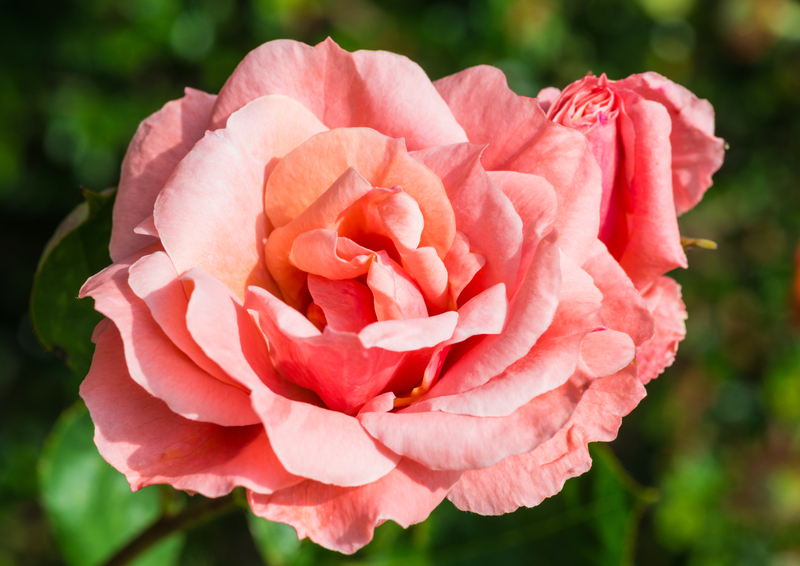Core Tools Every Avid Gardener Should Have
Posted on 14/09/2025
Core Tools Every Avid Gardener Should Have
Whether you are a seasoned horticulturist or a passionate beginner, having the right gardening tools can make the difference between a thriving, beautiful garden and one that leaves you frustrated. In this comprehensive guide, we'll delve into essential gardening tools every devoted gardener should own, share advice on choosing the best versions, and offer practical tips for maintenance and usage. Read on to ensure your tool shed is fully equipped for year-round success!
Why Having the Right Gardening Tools Matters
Equipping yourself with the core tools for gardening not only makes every task easier but also helps you accomplish your goals efficiently and safely. The proper equipment can:
- Reduce physical strain and prevent injury
- Enhance precision and effectiveness
- Save time and effort on routine tasks
- Keep your plants healthy and flourishing
- Boost your gardening joy
In short, with the right set of core gardening tools, you'll be set up for a verdant, blossoming oasis in your backyard or balcony.

Core Tools Every Avid Gardener Should Own
Let's explore the top must-have gardening tools and discuss why each is essential for any enthusiastic gardener.
1. Trowel
The humble hand trowel is a gardener's constant companion. This small hand tool is used for digging small holes, transplanting seedlings, planting bulbs, and even pulling weeds. Look for a trowel with a comfortable, ergonomic handle and a sturdy stainless-steel or aluminum blade that stays sharp and won't rust. Wide, deeply curved blades are best for scooping soil, while narrower trowels are ideal for digging and transplanting.
- Transplant young plants
- Plant bulbs and seedlings
- Weed around tight spots
- Mix soil amendments into your planting beds
2. Pruning Shears (Secateurs)
Sharp pruning shears, also called secateurs, are vital for keeping plants healthy and well-groomed. They allow you to snip away deadheads, trim errant branches, harvest herbs, and cut flowers.
- Choose bypass pruners for live stems
- Seek an ergonomic grip that matches your hand size
- High-carbon steel blades maintain sharpness longer
Regularly clean and oil your pruning shears to extend their lifespan and prevent disease transmission between plants.
3. Gardening Gloves
No list of essential gardening tools is complete without a pair of high-quality gardening gloves. They protect hands from thorns, splinters, soil, and agricultural chemicals.
- Fabric gloves are flexible and breathable for light tasks
- Leather gloves offer extra protection against brambles and sharp objects
- Rubber-coated gloves are ideal for damp conditions and handling prickly plants
Ensure a snug fit for better dexterity and safety.
4. Spade
The spade is a sturdy, flat-bladed tool perfect for digging, edging beds, slicing turf, and moving soil. Its short handle offers leverage for tough digging tasks. Look for a spade with:
- A strong steel blade and solid welds
- A comfortable, D-shaped handle
- Shaped footrests for extra digging power
5. Garden Fork
A garden fork, sometimes called a digging fork, is designed to easily break up soil, turn compost piles, and aerate garden beds. It's especially useful for working in clay or compacted soils where a spade might get stuck.
- Stainless steel tines resist rust and bending
- Four strong, tapered prongs are best for versatility
6. Watering Can or Garden Hose
Efficient watering tools are non-negotiable for plant health. Depending on your garden size, you may need a watering can, hose, or even both:
- Watering cans offer precision for delicate seedlings and houseplants
- Garden hoses with adjustable nozzles are better suited for larger beds and lawns
- Consider soaker hoses or drip irrigation for consistent, hands-off moisture
7. Hoe
The garden hoe is indispensable for weed control and soil cultivation. There are different types:
- Draw hoes for chopping weeds and shaping soil
- Stirrup (or oscillating) hoes for slicing weeds just below the surface with less disturbance
- Warren hoes for digging narrow furrows and planting rows
Choose hardened steel heads and hardwood or fiberglass handles for durability.
8. Rake
Gardening rakes come in two main types, both fundamental for neat, successful garden beds:
- Leaf rakes--Wide and flexible for collecting leaves and garden debris
- Bow rakes--Stiff, straight tines for leveling soil, spreading mulch, and breaking up clumps
9. Wheelbarrow or Garden Cart
Transporting compost, soil, plants, and tools around the garden is simple with a wheelbarrow or sturdy garden cart. Select one with:
- Strong, rust-resistant construction
- A balanced design for easy maneuvering
- Comfortable, easy-grip handles
Tip: Poly or steel wheelbarrows offer better longevity than plastic models.
10. Soil Knife (Hori Hori)
Originating from Japan, the Hori Hori (soil knife) is quickly becoming a favorite among avid gardeners worldwide. Its multi-purpose design features a sharp, serrated edge for:
- Weeding stubborn roots
- Cutting through sod or twine
- Dividing perennials
- Dibbing holes for planting
11. Loppers
Loppers are larger, long-handled pruners designed for cutting thick branches and stems too hefty for hand shears. They provide greater leverage and reach, making them a core tool for maintaining trees, shrubs, and hedges.
12. Seed Sower or Dibber
For precise planting, a dibber (or dibble) creates uniform holes for seeds, bulbs, and seedlings. A simple wooden or metal peg can make quick work of seeding rows or setting out transplants.
Additional Useful Gardening Tools and Accessories
While the above are the core gardening tools every enthusiast should own, other handy items can streamline your workflow and improve results:
- Spray Bottles for misting delicate plants and applying foliar feeds
- Garden Kneeler & Pad to ease joint stress during low work
- Soil Testing Kits for monitoring pH and nutrients
- Plant Labels & Markers to keep beds organized
- String or Twine for staking and training plants
- Hand Saw for thicker branches and rough wood
- Fertilizer Spreaders for even application
How to Choose Quality Garden Tools
Selecting the right essential gardening equipment means considering both the tasks you regularly do and your personal preferences. Here are some top tips:
- Material: Stainless steel resists corrosion and keeps a sharp edge, while carbon steel offers strength but needs more care. Hardwood handles like ash or hickory last longest, though fiberglass handles are lightweight and durable.
- Comfort and Ergonomics: Look for padded or contoured grips, especially if you garden for extended periods. Heavier tools might suit some, while lighter options help prevent fatigue.
- Quality Over Quantity: Invest in fewer, higher-quality tools rather than a large set of cheap ones.
- Warranty: Many quality brands provide warranties, which indicate confidence in their products' durability and craftsmanship.
Maintaining Your Core Gardening Tools
Proper care extends the life and effectiveness of every gardening tool you own:
- Clean after every use to remove soil, sap, and pesticide residue
- Store in a dry place to prevent rust and deterioration
- Regularly sharpen blades for safe, precise cuts
- Oil wooden handles to prevent splitting and cracking
- Inspect for damage and repair or replace as needed
Tip: Hang tools by their handles or store them blade-down in sand or a bucket for extra protection.

Time-Saving Tips for Every Gardener
- Keep your gardening tools clean and organized--it saves time and frustration when you're ready to work.
- Invest in a sturdy garden caddy or tool belt to keep your frequently used tools close at hand.
- Sharpen blades at the start and end of each season.
- Set a calendar reminder to check and maintain tools monthly.
Conclusion: Gear Up for Gardening Success!
Building your collection of core gardening tools is a worthwhile investment, regardless of your experience level or garden size. By selecting durable, comfortable, and effective tools, you'll find every gardening task more manageable and enjoyable.
With these must-have gardening tools in your kit, the only limit to your garden is your imagination. Whether you're cultivating vegetables, ornamentals, or a flourishing backyard retreat, the right equipment transforms hard work into a labor of love. Happy gardening!

